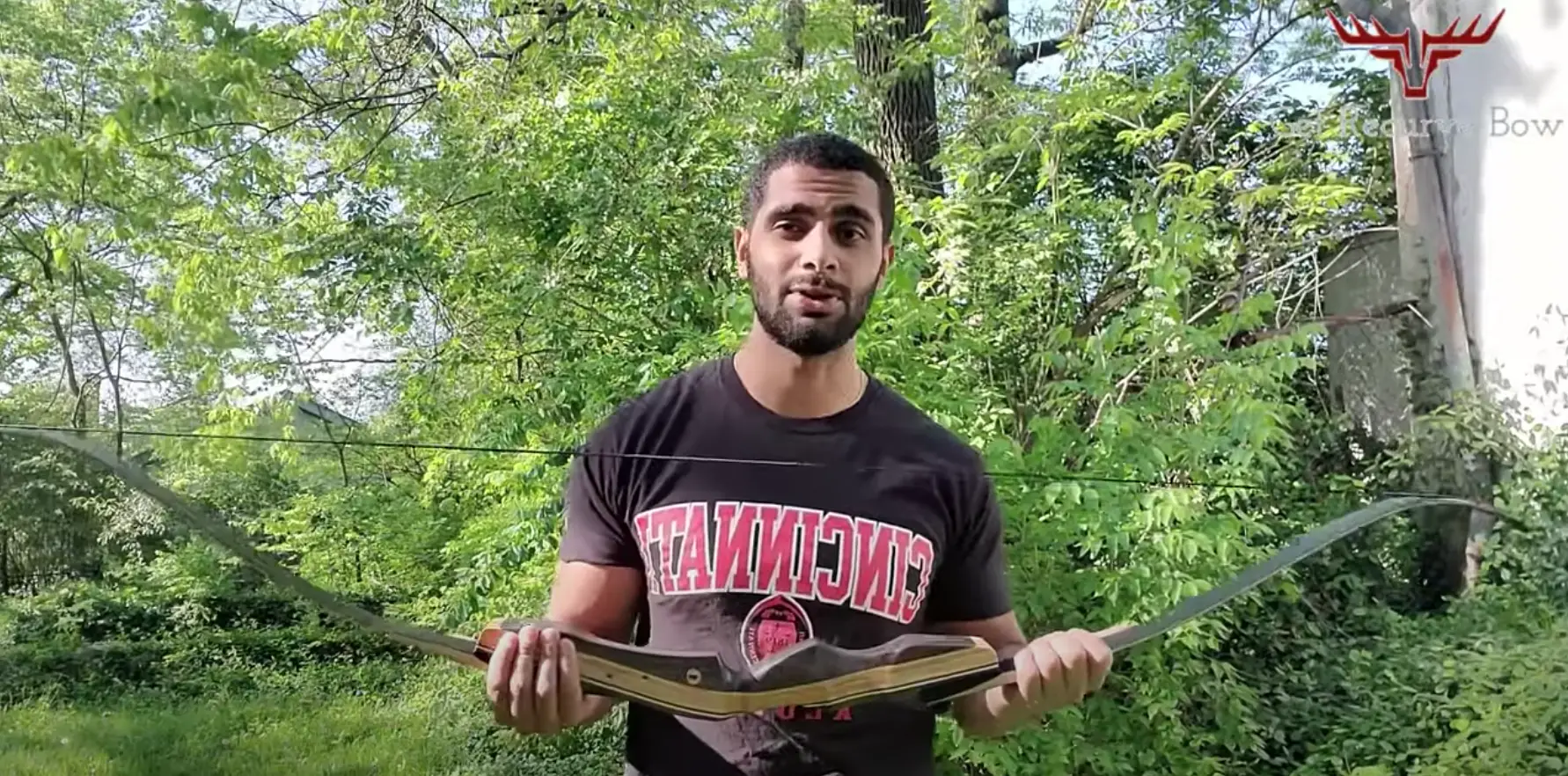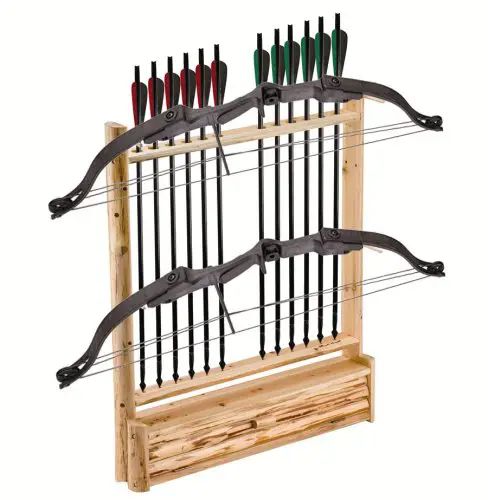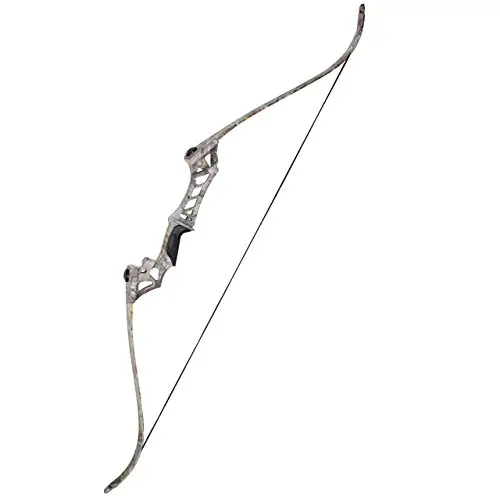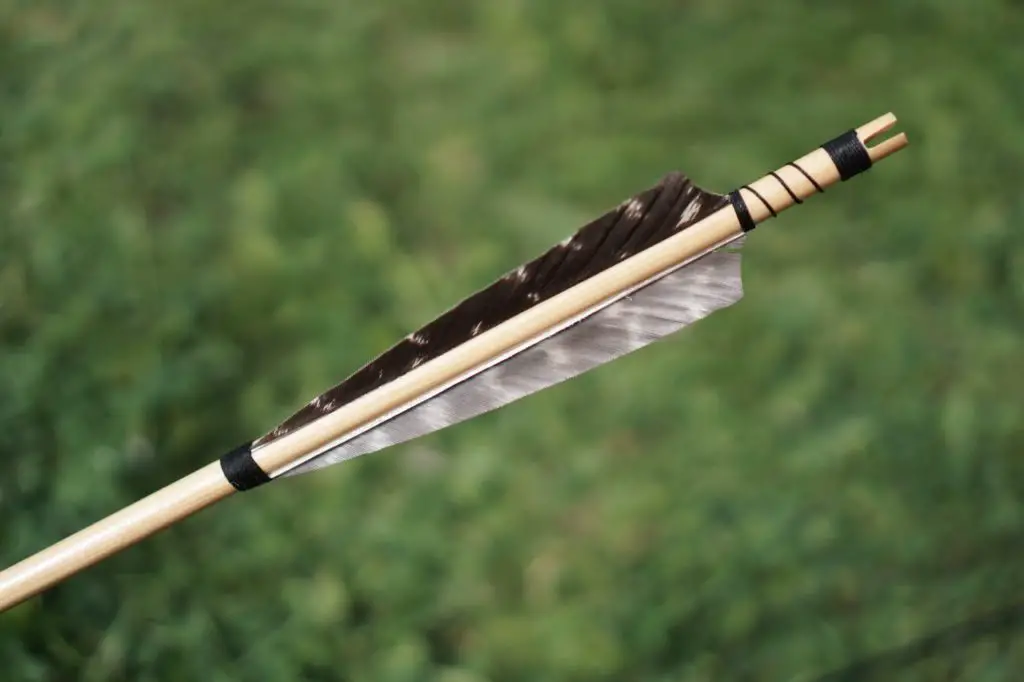It’s easy to recognize an archery bow and arrow by sight. Most people will probably know that they are looking at a bow and arrow the very moment they see one. But, can you mention the various parts of a bow? Can you describe what the arrow shelf is? What about a limb bolt, draw length, the nocking point, or even the type of wood they are made of?
Well, in case you are not in the know, do not worry because we’ve got you covered with a look at what makes up a modern bow.

Basic Bow Types for Archery
Bows come in three common styles:
- Longbow
- Recurve bow
- Compound bow
A long bow is typically composed of a single stick of material. When strung, it assumes a simple backward curve and remains straight when unstrung. The recurve bow is similar in style to the bow that is shot in the Olympic Games. It has extended limbs, which when strung; curve backwards close to the riser and the recurve forward at the tips. The compound bow is a more compact and shorter that was designed for hunting but is currently a favorite of competitive archers.
Bows are of different types and are configured differently. However, the parts illustrated in this guide are pretty universal. Check out these illustrations so that you understand what you are looking at when handling a bow.
Riser
The bow’s riser is the middle part that holds the grip. Additionally, the riser forms the part on which the sight and arrow shelf is mounted. They are typically composed of aluminium, but deluxe compound bows employ carbon fibres in reducing the aggregate weight of the device. The riser provides an attachment for several accessories, including the arrow rest, stabiliser, sight, and quiver.
Limbs
The limbs denote the versatile fibreglass planks that are found at both ends of the bow and are attached to the riser. The limbs provide an attachment for the cams (outlined below). It is the limbs that provide storage for energy generated when you draw back the bowstring.
The limbs come in a variety of styles; solid limbs, split limbs, and parallel limbs. Solid limbs are composed of a single fibreglass piece while split-limbs comprises of two thin limbs attached to the riser. Split limbs provide more durability and yield less hand shock than their solid counterparts. Parallel limbs have the advantage of being quieter and exhibit less recoil on releasing the bowstring.
Cams
The cams refer to the oval or round disk attachments on the ends of the limbs. They are what distinguish a compound bow from other types. They serve to overcome the challenge posed by traditional bows, in which the string gets harder to pull after some point. As you draw the string back, cams manipulate the draw weight mechanically such that past a certain instant, the pulling gets easier given the same amount of energy you would have if you were employing a traditional bow.
Cams also come in different types; round wheels, hard cams, soft cams, 1.5 hybrid cams and single cams. Each one is distinct regarding the advantages and shortcomings. For instance, round wheel cams yield a slower arrow rate but offer much more precision than others. On the other hand, hard cams can yield fast arrow speeds; however, they are harder to keep them tuned.
Cam Systems
While cams are the distinct wheels of a compound bow, the term cam systems denote the network of wheels or how the wheels configure, integrate and work together. Cam systems are of four-fold: Single cams, binary cams, twin cams, and hybrid cams.
Bowstrings
This is the part that launches the arrow. The majority of contemporary bowstrings are composed of man-made materials which don’t stretch out and get rid of tension over time. Thus, the bowstring has a D-loop where you will attach the device to mechanical release.
Cables
The cables refer to the part that runs from one cam to another and is responsible for moving the cams when drawing back the bowstring.
Cable Guard
This is a fibreglass bar that runs vertically to the riser. The cable guard liaises with the cable slide to ensure that the cables are kept away from the bow’s centre and out of the line of fire of the arrow.
Cable Slide/Cable Groove
This is a tiny plastic part that is appended on the cable guard. It is the small piece that mounts the cables and works with the cable guard to help maintain the strings out of the path of the arrow. Simply put, the cable groove keeps the bow cable in place.
Arrow Rest
Just like the name suggests, it forms the part where you rest the arrow as you get ready to release it. They come in a variety of options for you. For example, a beginner compound bow will most likely have a containment rest. T
his type of arrow rest encircles the arrow wholly and holds it firmly in place until shot. The arrow rest enables you to focus your attention on your target. The drop away, the pressure and the shoot-thru are the other categories of arrow rests.
Check out the list we put together for the best arrow rests.

Sight
This part connects to the riser and enables you to aim your bow. The most common type of sight is the fixed pin; composed of 3-5 pins within the sight circle. Other types of sights include the pendulum pin sights and the adjustable pin sights.
We have put together a list of the best archery sights for the most accurate shot.
Peep Sight
It denotes a donut-shaped plastic piece that inserts between your bow strings’ strands. You look through this part to aim.
String Vibration Arrester
This is the part that is fixed to the riser, near the bowstring. As the name suggests, string vibration arrester absorbs vibration in a shot to reduce sound.
Stabilizer
It is an optional part of your bow. It is typically a rod that appends to the front part of the bow and below the grip. It serves two functions; keeps your steady when shooting and depletes vibration and noise.
Mechanical release
This part is common with compound bows. It overcomes the traditional practice of pulling back the bow using your fingers. It’s an appliance worn on the wrist and hand and is used to pull back the bowstring.
For More Information Regarding Some Of The Best Recurve Bows Ever Made, Check Out Our Guide to the Best Recurve Bows!

Archery is my hobby & I usually hunt and play on weekends and after work. It’s a passion since I was very young and I love writing about it as well to continuously learn more and share the love of archery with others!





